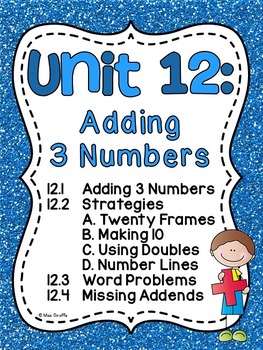Day 1
Student supplies:
- red and yellow chip counters (5 per child)
- five frames (one per child)
Teacher supplies:
- chart paper and marker
- glue stick
- large paper five frames (6) already glued onto the chart ahead of time
- __ and __ paper prompts (6) already glued onto the chart ahead of time
- 1.5" red and yellow circles (I bought a circle punch at Michaels that makes circles this size)
Procedure: I have students use their five frames and show all 5 boxes filled with red counters. From there I glue 5 red counters into the first 5 frame. Below that (in the __ and __ prompt) I write 5 red and 0 yellow. Then I have the students flip ONLY one counter to make it yellow. I create the frame for 4 and 1 on my chart paper. I continue this process for the rest of the ways to make 5. (Note: After you do 3 and 2 if you move to the right for 2 and 3 students who are ready for it will be able to see the addends reversed.)
Day 2:
Student Supplies:
- five frames (one for each student)
- red and yellow counters (5 for each student)
- Making 5 mini-book
- scissors
Teacher Supplies:
- Making 5 Anchor Chart (from the previous day)
- Making 5 mini-book
- stapler
Procedure:
- Have students place 5 red counters on the five frame. Keep the chart in front of the group and ask the students to tell you how many reds and yellows they used to make 5. Repeat this process for all the different combinations of 5.
- Have students select 2 colors of crayons and color the apples on the Making 5 mini-book to show ways to make 5 that match each addition sentence. (This mini-book is available with the word plus and the word and as alternatives to a plus sign.)
Day 3:
Student supplies:
- red and yellow chip counters (5 per child)
- five frames (one per child)
- Robot Making 5 Center
Teacher supplies:
- Making 5 Anchor Chart
- Robot Making 5 Center
Procedure:
- As a class review the anchor chart again, still with students being hands on with chips and five frames.
- Introduce the Robot Making 5 Center- in this center students will match 5 frames with robots of different colors to the making five expressions (either 4 and 1, 4 plus 1 or 4+1). You can differentiate the making five expressions depending on your students. Recording sheets also come with this center.
Please join my link-up and share up to three resources for teaching beginning number sense.

|
|






































